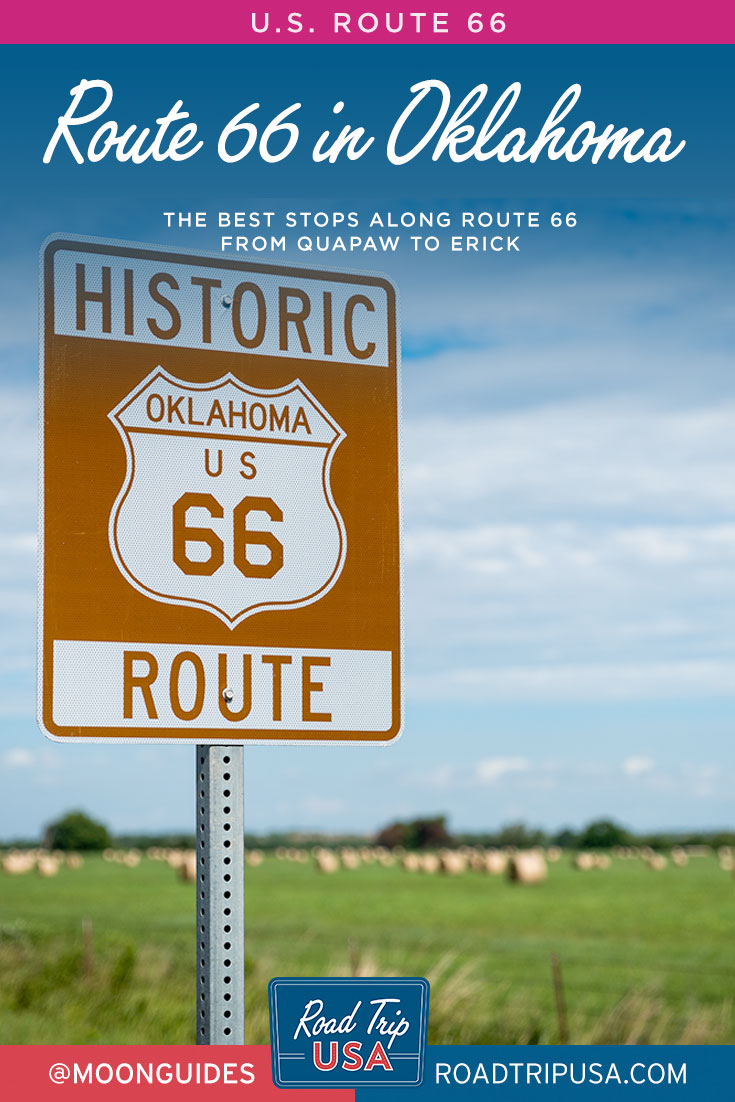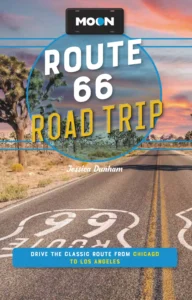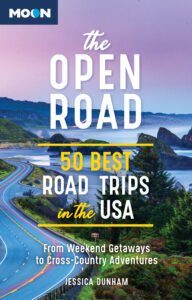Oklahoma
Driving through Oklahoma on Route 66
Apart from occasional college football teams, Oklahoma doesn’t often get to crow about being the best in the country, but as far as Route 66 is concerned, the state is definitely number one. Containing more still-drivable miles of the old highway than any other state, Oklahoma is a Middle American mecca for old-roads fans.
The Dust Bowl exodus of the 1930s uprooted thousands of families who headed west on Route 66, and today many of the towns along the road take bittersweet pride in their The Grapes of Wrath connections.
You can also still see signs that go back farther into the state’s history, just over a century ago, when all of Oklahoma was Indian Territory. It was the last refuge of Kiowa, Apache, Comanche, and other nations before the U.S. government took even this land away from them during “land rushes” in the 1890s. Today, some nations have retained enough legal autonomy to issue license plates and run casinos.
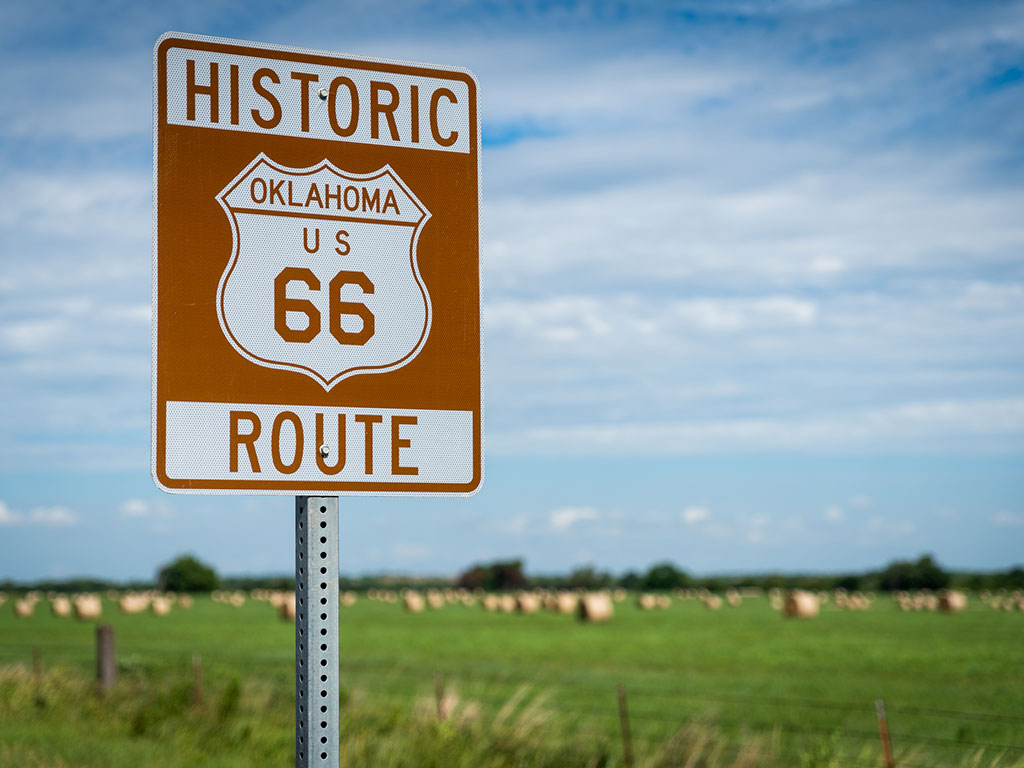
Northeast Oklahoma: The Sidewalk Highway
In the far northeastern corner of Oklahoma, old Route 66 runs through a hardscrabble former lead- and zinc-mining region, from the Kansas border to Vinita on the I-44 turnpike. Quapaw, 4 mi (6.4 km) southwest of the Kansas border, could be the first or last Oklahoma town you visit, depending on your direction, but either way it’s worth a look for the many murals painted on the walls of downtown businesses. The next town along, Commerce (pop. 2,401), was another old mining town, noteworthy as the boyhood home of the late, great Yankee switch-hitter Mickey Mantle, in whose honor the old Route 66 alignment down Main Street has been renamed. A statue of Mantle graces the Commerce high school baseball field, right off Route 66.
Miami, 5 mi (8 km) to the south via old Route 66 (now signed as US-69), holds the magnificent Spanish Revival-style Coleman Theater, built in 1929 when the town was still luxuriating in the riches coming out of the surrounding mines.
Still following US-69, now roughly parallel to (and eventually crossing under) I-44 between Miami and Afton, some of the earliest paved stretches of old Route 66 were constructed only one lane wide, because in 1926 the state of Oklahoma did not have enough money to build a full-width version. Not surprisingly, these lengths of the road became known as the “Sidewalk Highway.” The easiest stretch to find runs parallel to US-69: Turn west at the Northeast Technology Center vocational school along an increasingly narrow country lane, and look out for the 66 shields painted on the pavement. This “Sidewalk Highway” rejoins the main Route 66 alignment at Afton, where a convenience store now stands on the site of the fabled Buffalo Ranch Trading Post.
For more on Afton, the Buffalo Ranch, Route 66, or help finding the Sidewalk Highway, head down to Afton Station (12 SE 1st St., 918/284-3829), a nicely renovated 1930s-era gas station that has been brought back to life as a gift shop and museum of mostly old Packard cars.
Top Stops on Route 66 in Oklahoma
- Vinita and Foyil: The region’s Native American heritage is brought into focus with museums and sculpture
- The Blue Whale in Catoosa: One of Tulsa’s premier Route 66 attractions
- Pops in Arcadia: Built by Aubrey McClendon, Pops opened in 2007 and sells more than 400 different varieties of soda pop
- Clinton: The Oklahoma Route 66 Museum is not to be missed by any Route 66 aficionado
- Oklahoma City: One of the primary stops along the Mother Road
- Elk City: Explore the area’s cowboy and pioneer history and visit the official National Route 66 Museum
Related Travel Guides
Map of Route 66 in Oklahoma
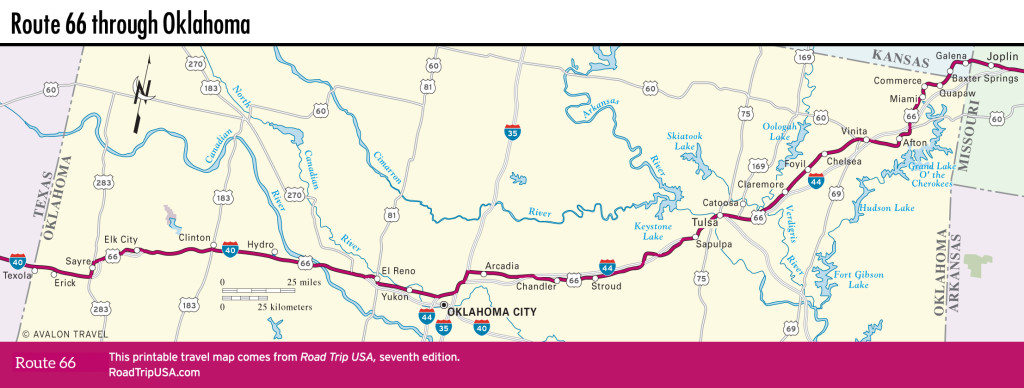
Pin it for Later
